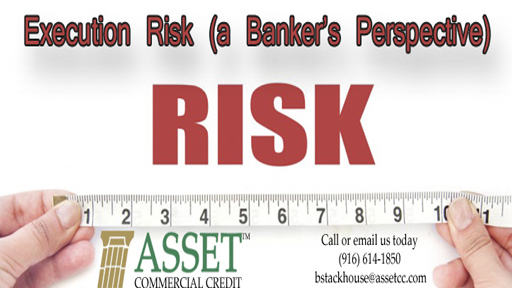Execution Risk is one of the lending decision topics that is deeply gray. Bankers have black and white scoring models for leverage ratios, cash flow and other measurable decision components. Properly evaluating the grey area of execution risk is more of an art form than statistical analysis.
Let’s get the jargon out of the way first. Execution risk is the risk that a business will not be successful if they implement their plan, or that they can not successfully pull it off.
Yes, some components of execution risk are embedded in the measurable lending criteria. Perhaps the business is too leveraged, or does not have adequate cash flow. One may look at non-traditional achievements to see part of my point. For instance if someone wants to climb Mt. Everest but does not have the equipment or conditioning, they will likely fail. If someone wants to play sports, but they are not trained in the nuances of the sport, the odds are against the person. The same holds true for businesses. Equipment, preparation, training, facilities and support are all likely components in a successful business plan.
If someone is trying to launch or grow a business without proper equipment or the company is under capitalized, the banker’s decision process is pretty simple. Bankers decline the request and refer the business to a collateral lender, broker, consultant, accountant or investment banker. What if the business seems to have many or most of the core components in place? How does the banker measure planning, conditioning, knowledge, training, and staying power, among others?
To help explain this grey area, I’ve taken eight examples from our five most recent credit applications. I’ve formatted them as rules to assist your loan application presentation.
- Your materials should be consistent and tell the same story. Inconsistencies communicate that you might not be telling the truth, or that you may fail because of a lack of attention to detail.
- Speaking of the story, tell one. Explain where you are and how you got there, not just were you are going. The context of the story will make any oddities in your plan make sense.
- Finalize your plan before you present it. I don’t mean be cocky about it. I just mean that focus and determination can become apparent if you have a finalized plan. Otherwise the banker wonders where you are really going and if you will really get there.
- Don’t overpay for a business, even if you can afford it. Many entrepreneurs will get overly excited about an opportunity and agree to things that they should not agree to. This communicates that you may make similar mistakes about other decisions in the future. The banker will tend to not trust your judgment.
- Always have a back up plan. Especially if you are getting approvals from cities, counties or other government entities. Government agencies often take longer to approve something than the typical business owner expects. Planning tells the banker that you have your eyes wide open and are ready to react to surprises. Indeed, Murphy lives.
- Understand your cash flow and how everything will affect it. You should be the expert on your cash flow, margins, terms, industry preferences, and collections. If you cannot talk fluidly about these items, then the banker will have good cause for concern. They will think … as an analogy … that you are flying a plane blindfolded.
- Be fully prepared to manage your growth. Too much growth has killed a number of companies, just like insufficient capitalization has. Tell the banker how you will keep from growing too fast. You want to find a way to get the banker to trust your judgment.
- Take the time to understand how financiers think. Also, know when to approach different types of financiers (banking, collateral lending, and fundraising) because they all have their own niche in financing businesses.
So, if you are guilty of any of these, fix them as soon as you can.
If you need more help, consider hiring a business consultant to assist you. My biggest caution on business consultants is that some of them veer from your real plan, substituting their plan. Do not let this happen. It is good to be trained and coached, and then implement your plan, taking ownership and responsibility for the entire plan.
If you need assistance in finding a good consultant, I am happy to point you in the right direction. Just drop me a line.
Bob Stackhouse, President, Asset Commercial Credit
© Bob Stackhouse – All rights reserved – March 2014
